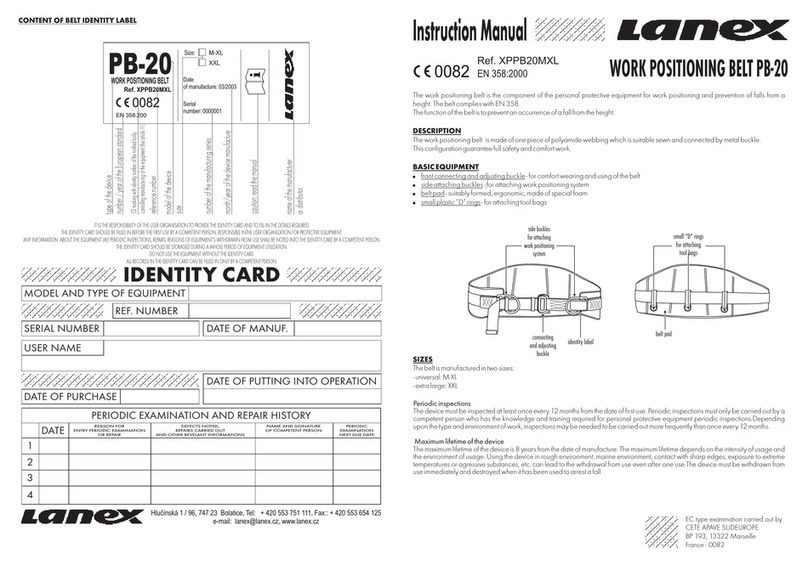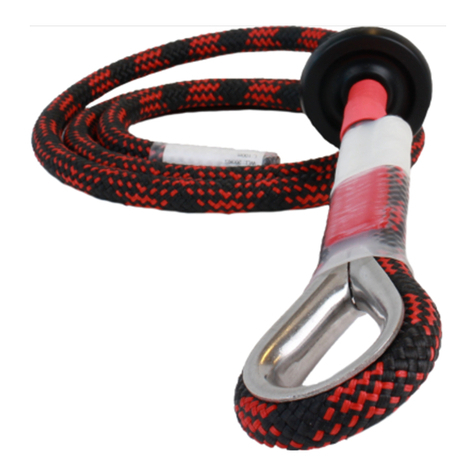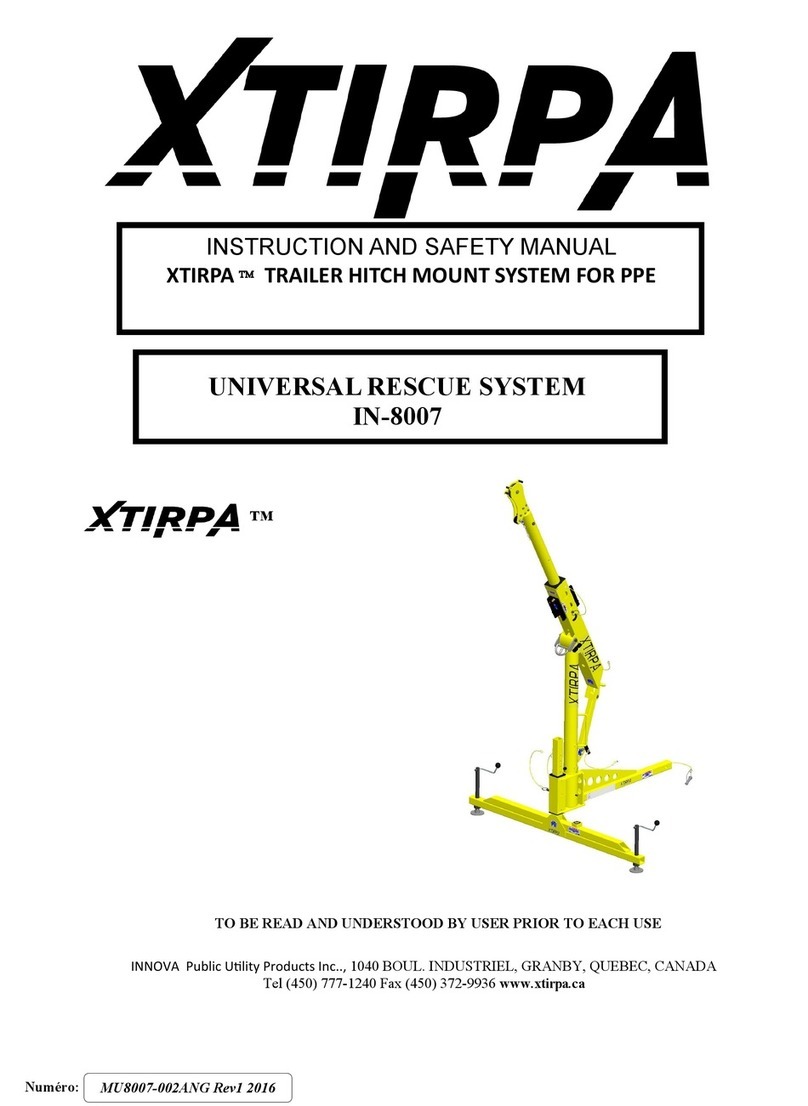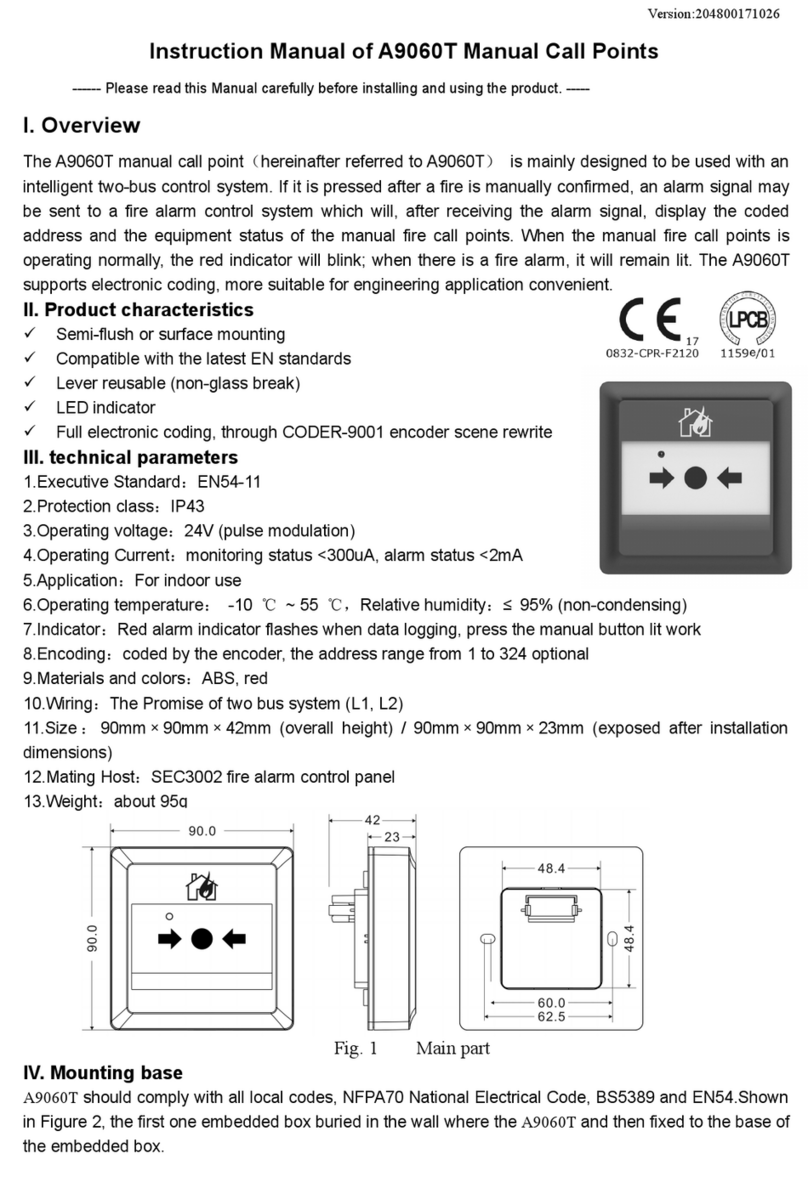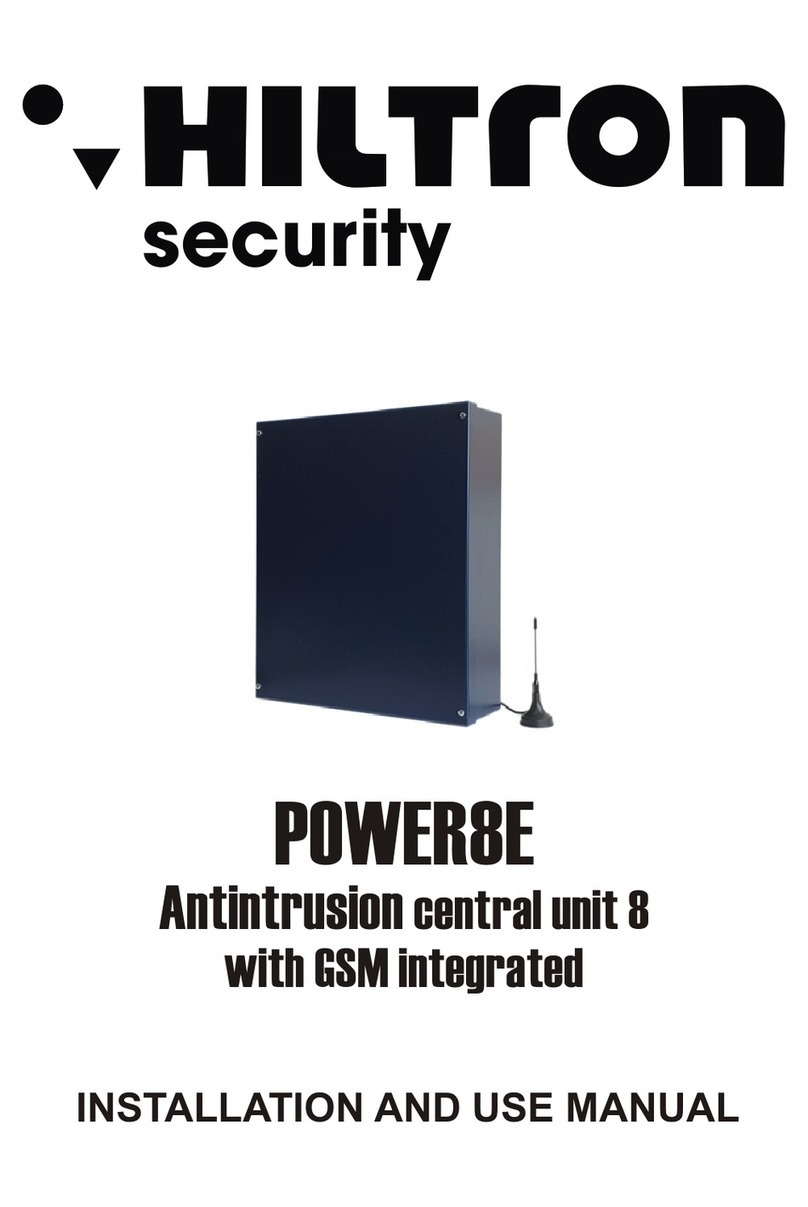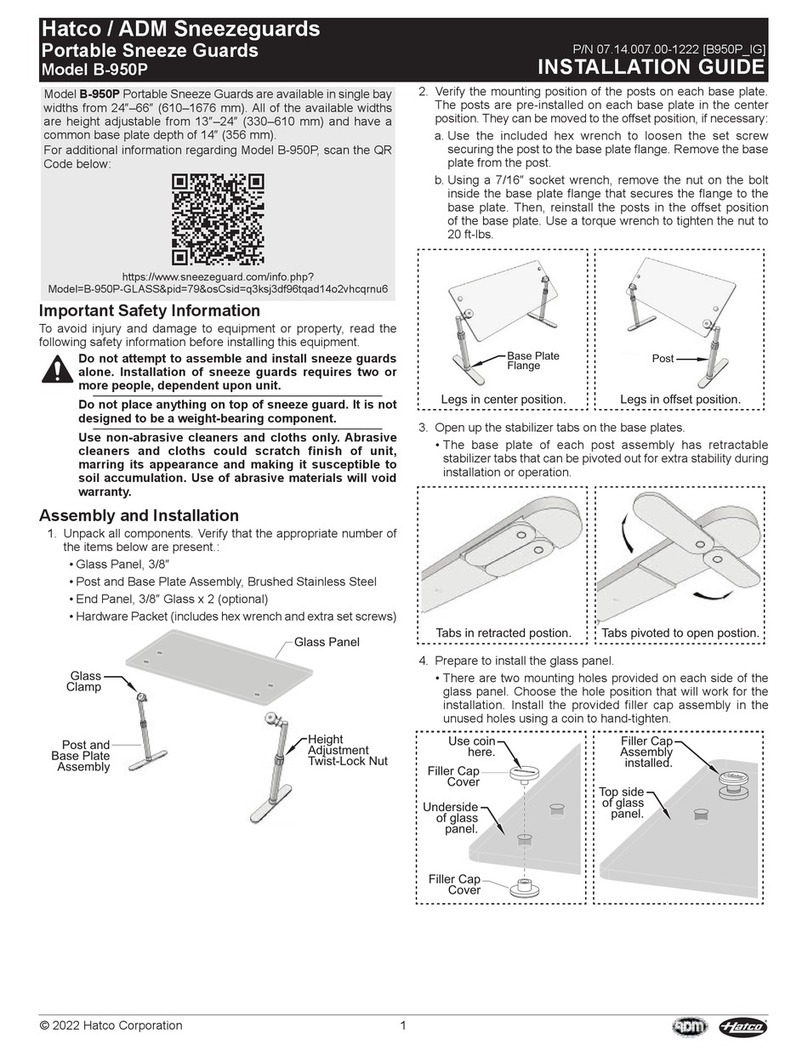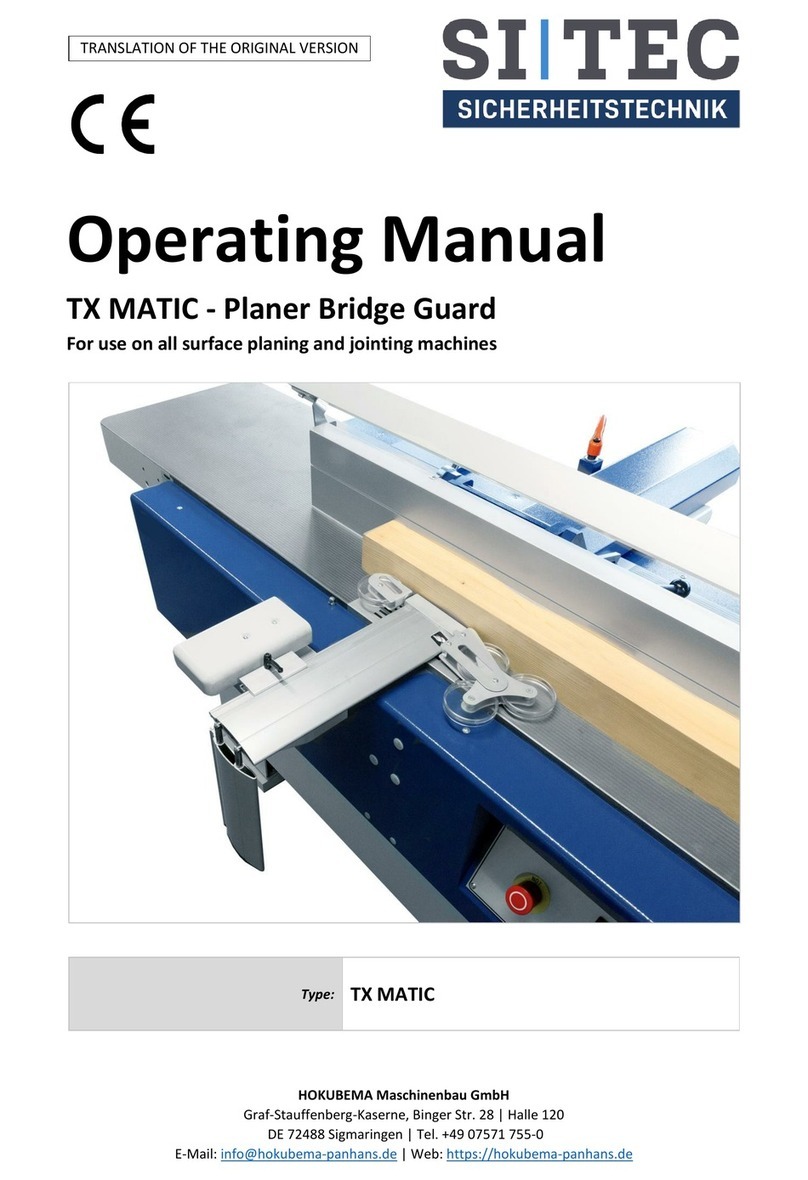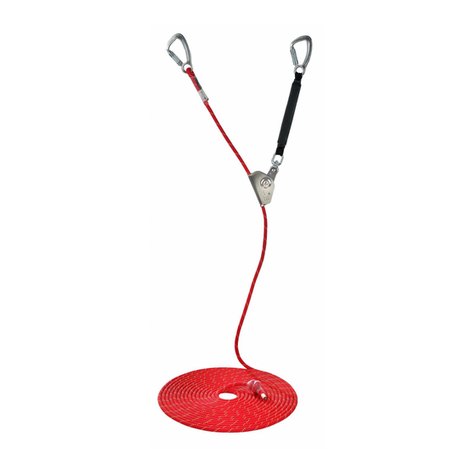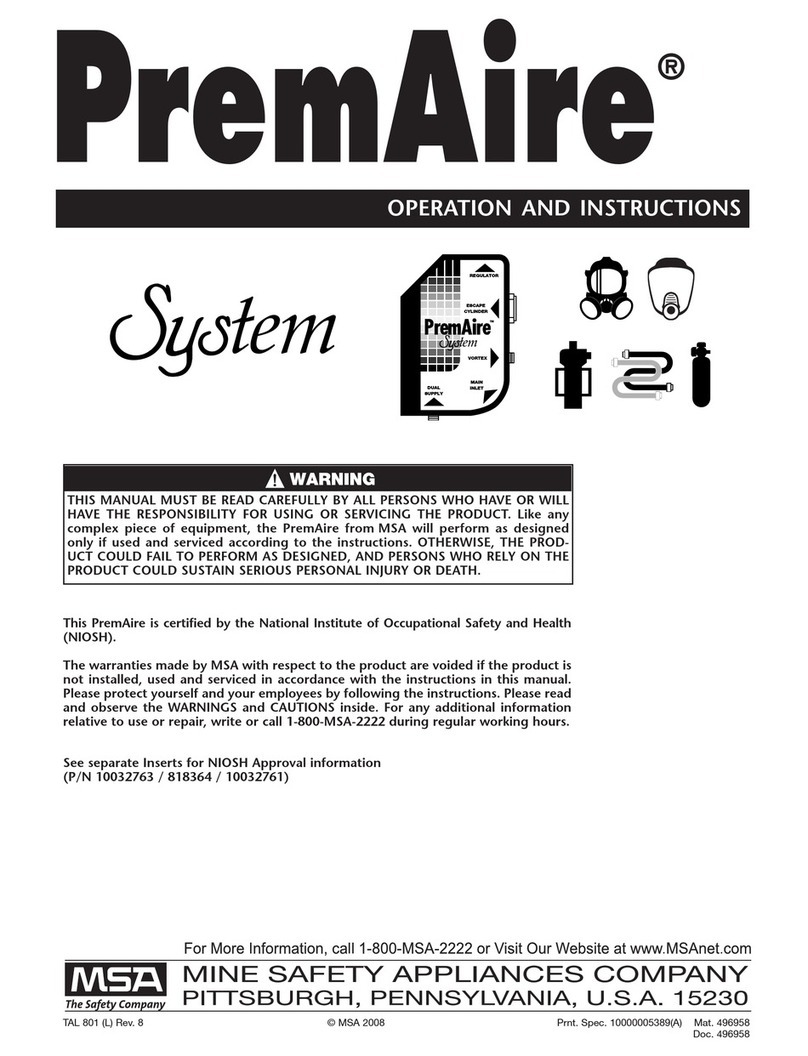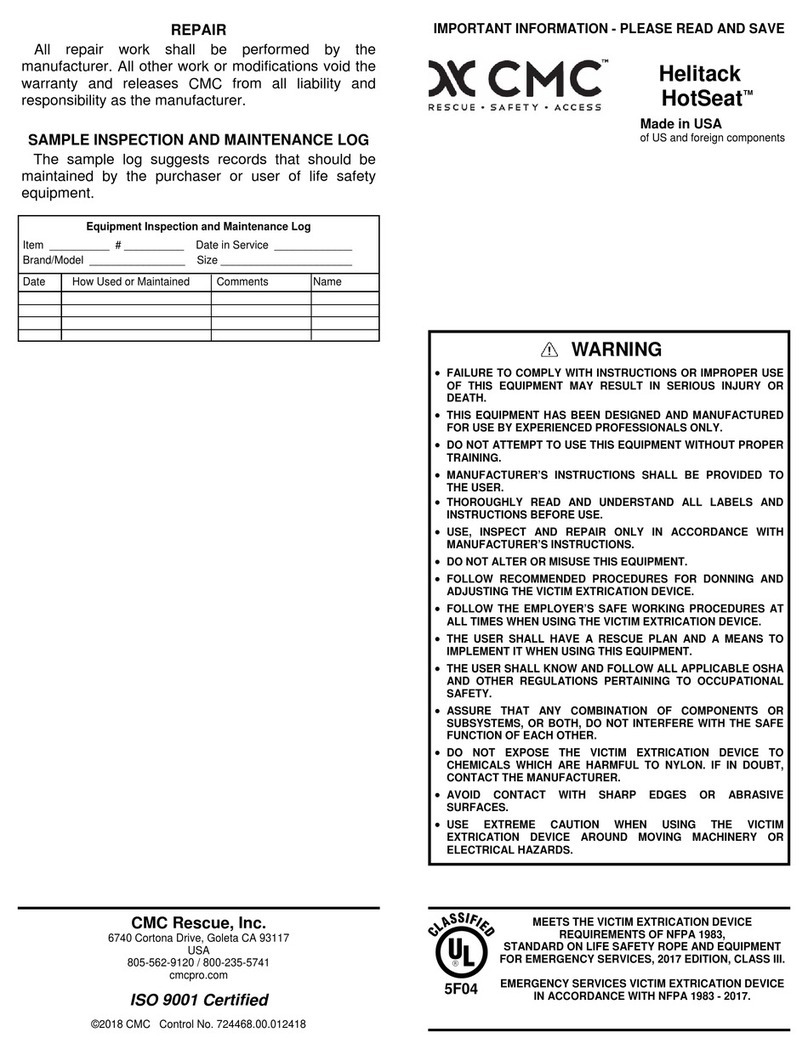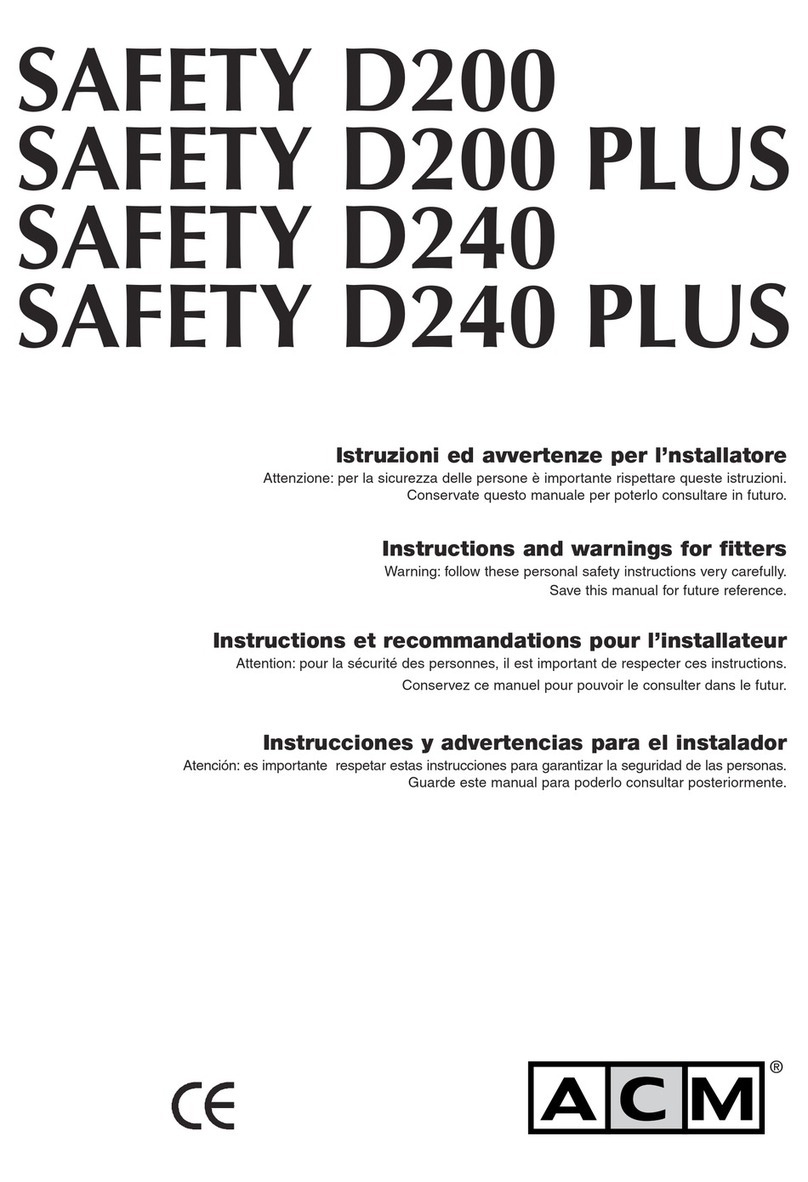
IFU . 3
FABRIC RESISTANCETOPENETRATION OF INFECTIVE AGENTS
Test Test method ENClass*
Resistancetopenetrationbyblood andbody uids usingsynthetic blood ISO 16603 6/6
Resistancetopenetrationbyblood-borne pathogensusing Phi-X174
bacteriophage ISO16604ProcedureC 6/6
Resistancetocontaminationby contaminatedliquids ENISO22610 6/6
Resistancetopenetrationbybiologicallycontaminatedaerosols ISO/DIS 22611 3/3
Resistancetopenetrationbybiologicallycontaminateddust ISO 22612 3/3
*Accordingto EN 14126:2003
PROTECTIONAGAINSTHEATAND FLAME
Test Test method Result- EN Class*
Heatresistanceat a temp of 180°C +/-5°C ISO 17493 Pass
Heatresistanceat a temp.of260+/-5°C ISO17493 Pass
Limitedamespread(surfaceignition),CodeletterA1 ISO15025,ProcedureA A1,Index3**
Convectiveheat,codeletterB ISO9151 B1
Radiantheat,codeletterC ISO 6942,Method B C1
Moltenaluminiumsplash,codeletterD ISO9185 D1
Moltenironsplash,codeletterE ISO9185 E2
Contactheat,code letter F ISO 12127 F2
Electricarc-Openarctestmethod IEC61482-1-1 ATPV = 15 cal/cm2
Electricarc-Boxtestmethod IEC61482-1-2 4kA-APC=Class1
*Accordingto EN ISO 11612:2015 ** AccordingtoENISO14116:2015
WHOLESUITTEST PERFORMANCE
Test Result ENClass
Type 3: Jet test (EN ISO 17491-3) Pass* N/A
Type 4: High level spraytest(ENISO 17491-4, Method B) Pass** N/A
Type 6: Lowlevelspraytest(ENISO17491-4,MethodA) Pass** N/A
Seamsstrength(ENISO13935-2) >300N 5/6***
N/A=Notapplicable *Testperformedwith a separatehoodtapedtothejacket **Testperformedwithaseparatehood ***Accordingto EN 14325:2004
Forfurther information aboutthisgarmentand its performances,pleasecontact your supplier orDuPont:www.ipp.dupont.com
RISKS AGAINST WHICH THE PRODUCT IS DESIGNED TO PROTECT:
This garment is designed to oer chemical protection and protection against heat and ame based on the specic uses
in accordance with requirements of the standards and the classes for which the garment is certied. The standards and classes are displayed in the CE-label in the garment. It is designed to protect against short ame
contact, small, certain forms of heat transfer, molten metal splash, thermal risk from electric arc and as an escape suit to potentially reduce skin burns or increase survival probability in the event of a ash re (conform to
EN ISO 11612:2015). It is typically used, depending on toxicity and exposure conditions, for protection against certain organic and inorganic liquids and intensive or pressurized liquid sprays, where the exposure pressure
is not higher than the one used in the Type 3 test method.This protective garment provides protection against intensive or pressurized liquid sprays (Type 3), intensive liquid sprays (Type 4) and limited liquid splashes or
sprays (Type 6). Fabric used for this garment has passed all tests of EN 14126:2003. Under the exposure conditions, as dened in EN 14126:2003 and mentioned in the above table, the obtained results conclude that the
material oers a barrier against infective agents.
LIMITATIONS OF USE
:
Thisgarmentis not intendedforre-ghting activities, andisdesigned to provide specic levelofprotectionagainst certain chemicals, molten metals,electrical arc or thermalradiationbased on the
standardsandclasses met by thegarmentasdisplayedinthe abovetables and on theCE-labelinthe garment.Thegarmentdoesnot protect against allkindofelectric arcs.Deviations from the parameters inthisdocumentmayresult
inmore severeconditions.This garmentisnot intended to be usedas electricalinsulating protective clothing and doesnot provide protection against electricalshock. Isisdesigned and tested tohelpreduceinjury duringescape from
a re. It is intended to help reduce the potential for injury, but no protective apparel alone, can eliminate all risks of injury or death. Protective apparel must be used in conjunction with general safety practices by trained personal.
In the event of a molten metal splash the user shall leave the working area immediately and take o the garment. In the event of a molten metal splash, the garment, if worn next to the skin, will not eliminate all risks of burn injury.
No garments such as shirts, pants, undergarments or underwear which melt under heat, ame and arc exposures shall be worn underneath this garment. The use of Nomex® or non-melting undergarments is recommended. The air
trapped between layers of material plays an important part in providing heat insulation.The protection is reduced in areas which are tight tting or compressed by belt or straps.The jacket and bib overall can only provide protection
if interfaces between this garment with other garments at the neck, wrists and ankles is adequate.The fabric used in this garment is inherently antistatic on the inside surface only and the garments meet the surface requirements
of EN 1149-5:2018 when measured according to EN 1149-3:2004. This shall be taken into consideration if the garment is grounded.The electrostatic dissipative performance of both the suit and the wearer needs to be continuously
achieved in such a way as the resistance between the person wearing the electrostatic dissipative protective clothing and the earth shall be less than 108 Ohm e.g. by wearing adequate footwear/ooring system, use of a grounding
cable, or by any other suitable means. Always verify correct grounding via a test with a monitoring device. Electrostatic dissipative clothing shall not be opened or removed whilst in presence of ammable or explosive atmospheres
or while handling ammable or explosive substances. Electrostatic dissipative protective clothing is intended to be worn in Zones 1, 2, 20, 21 and 22 (see EN 60079-10-1 [7] and EN 60079-10-2 [8]) in which the minimum ignition
energy of any explosive atmosphere is not less than 0.016mJ. Electrostatic dissipative clothing shall not be used in oxygen enriched atmospheres, or in Zone 0 (see EN 60079-10-1 [7]) without prior approval of the safety engineer.
The electrostatic dissipative performance of the electrostatic dissipative protective clothing can be aected by wear and tear and possible contamination. Electrostatic dissipative protective clothing shall permanently cover all non-
complying materials during normal use (including bending and movements). In situations where static dissipation level is a critical performance property, endusers should evaluate the performance of their entire ensemble as worn
including outer garments, inner garments, footwear and other PPE. Further information on grounding can be provided by DuPont. Exposure to certain very ne particles, intensive liquid sprays or splashes of hazardous substances
may require garments of higher mechanical strength and/or barrier properties than those oered by this garment.The user must ensure garment barrier compatibility to all chemical exposure risks before use. For this garment the
user shall rst don the bib overall and secure the shoulder strap buckles and then don the jacket on top using the zipper and rugged hook and loop closure. As the jacket of this garment has a collar, a separate hood was used that was
taped to the garment to achieve some of the claimed protection levels. Taping of the garment may negatively impact protective properties against heat and ame, thermal radiation, electric arc and metal splash. If tape is used, the
wearershalluse a ame resistant/hightemperature tape.Tape mustnotnegativelyimpact dong process incaseof an emergency.Thisfabric oers little ornothermal insulation to protectthe wearer’s skinfromprolongedexposure
to hot or cold.The temperature range for the fabric and seams it well beyond the temperatures that the human skin can withstand without injury. The user shall perform a risk analysis, including a verication of the barrier properties
against the chemicals of concern, upon which he shall base his choice of PPE. He shall be the sole judge regarding the combination of the protective clothing with ancillary equipment (boots, gloves, respiratory protective equipment,
undergarments etc.) and for how long a protective garment can be worn on a specic job with respect to its protective performance, wearing comfort and heat stress. For full body protection, the protective clothing shall be worn in
the closed state. DuPont shall not accept any responsibility for improper use of its products.
PREPARING FOR USE
: Inspect this garment prior to use. In the event of defects, contamination, or damage, do not wear.
CLEANING AND MAINTENANCE
:Forlimited use only.Do not clean,neitherfor hygienicreasons.This garment canbewornuntildamaged, alteredor contaminated.If the garment iscontaminatedduring use,
it must be decontaminated prior to dong and then discarded. If the garment is damaged during use, retreat immediately, undergo decontamination and then discard the garment.
STORAGE AND TRANSPORT
: This garment may be stored at < 49 °C in the dark (cardboard box) with no UV light exposure.The shelf life of this garment is 5 years if correctly stored.
DISPOSAL
:This garment can be incineratedorburied in a controlledlandll.Disposalrestrictionsdependupon the contaminationincurredduringuseandaresubject to nationalorlocal legislation.
DECLARATION OF CONFORMITY
:Declarationofconformitycan be downloaded at:www.safespec.dupont.co.uk.
Additionalinformation forother certication(s)independent of CEmarking.
